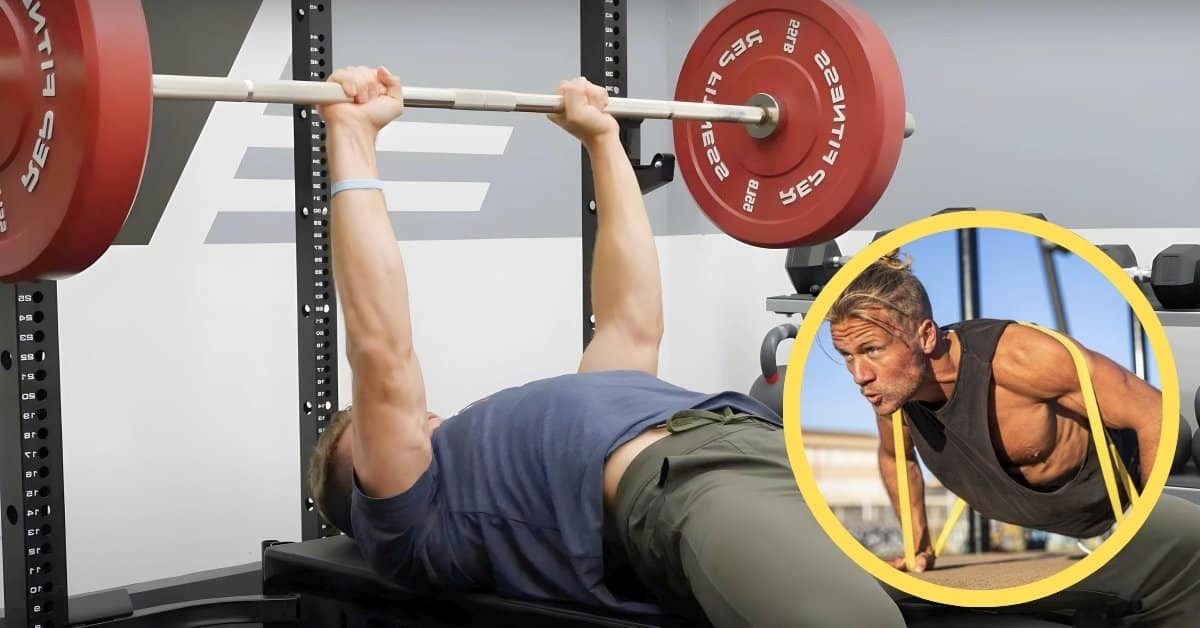Are you starting (or restarting) your fitness journey?
It’s tempting to jump into popular gym exercises, but many come with risks for beginners.
Protect your joints and avoid injury by discovering safer alternatives to common gym routines.
This article reveals 5 effective swaps that’ll help you build the body you want without the aches and pains.
Ready to get stronger the smart way? Read on!
Jump to:
Understanding the Risks of Common Gym Exercises
Traditional gym exercises, especially those involving heavy barbells, can pose significant risks if not performed correctly.
These risks are particularly acute for those new to the gym or returning after a break, as their bodies are not yet accustomed to the stresses of weightlifting.
Issues such as joint pain, muscle strains, and long-term injuries can all arise from improper exercise forms and techniques.
1. Alternative to the Bench Press
Traditional Issue: The bench press is notorious for causing shoulder pain, largely due to the unchanging position of the hands on the bar which can strain the shoulder joints.
Safer Alternative: Band-Resisted Pushups.
- How to Do It: Place a resistance band around your upper back and under your hands while in a pushup position. Ensure your hands are slightly wider than shoulder-width and your body is in a straight line from head to heels.
- Benefits: This variation allows for natural hand movement and positioning, significantly reducing the risk of shoulder injuries. It’s an excellent exercise for strengthening the chest and arm muscles without the harsh impact on your shoulders.

2. Alternative to the Shoulder Press
Traditional Issue: Standard barbell shoulder presses can put unnecessary stress on the spine and shoulders, particularly risky for those with limited mobility.
Safer Alternative: Landmine Angled-Barbell Half-Kneeling Press.
- How to Do It: Secure one end of a barbell in a corner or a landmine attachment, kneel on one knee, and press the barbell upwards while maintaining a straight line from your shoulders to your kneeling knee.
- Benefits: This exercise reduces the need to lift the arms fully overhead, thereby protecting the shoulders and spine while still effectively working the upper body muscles.

3. Alternative to Barbell Squats
Traditional Issue: Squats can be hard on the back and shoulders, especially for those who do not have the flexibility to perform them correctly.
Safer Alternative: Dumbbell Elevated Split Squat.
- How to Do It: Stand with each foot on a raised platform or step, holding a dumbbell in each hand. Lower your body by bending your knees and then push up back to the starting position.
- Benefits: The split squat focuses on the lower body without the same spinal load as a regular squat, making it safer for your back and easier on your shoulders.

4. Alternative to the Deadlift
Traditional Issue: Deadlifts often lead to lower back pain, which can deter many from performing this beneficial exercise.
Safer Alternative: Trap Bar Deadlifts.
- How to Do It: Stand inside a trap bar (also known as a hex bar) with feet hip-width apart, squat down to grip the handles, and lift by straightening your legs.
- Benefits: The design of the trap bar helps keep the weight closer to your center of gravity, reducing strain on the lower back and making the lift more natural and safe.

5. Alternative to Bent-Over Rows
Traditional Issue: Traditional bent-over rows can strain the lower back due to the prolonged bent-over position.
Safer Alternative: Bench-Supported Dumbbell Single-Arm Row.
- How to Do It: Lean over a bench with one hand supporting your body. Pull a dumbbell upward with your free hand without twisting your torso.
- Benefits: This position stabilizes your spine and reduces the load on your lower back while still targeting the upper back muscles effectively.

Conclusion
Choosing the right exercises is key to a successful and injury-free fitness journey, especially for those just starting out or returning after a break.
By incorporating these safer alternatives into your workout routine, you can build strength and confidence in the gym without putting undue stress on your body.
Remember, the best workout is not only about intensity but also about safety and sustainability.














